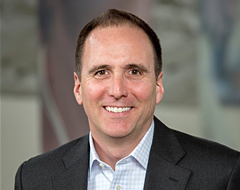Blog & Insights
Third-Party Collectors: Moving Beyond Bad Debt

Successful businesses continually look for ways to expand their business and increase their revenue streams. For third-party collection agencies operating in the healthcare industry, this includes swimming upstream with capabilities to manage patient pay and insurance follow-up to their suite of services. Is this line of business the right fit for your agency?
Let’s take a look.
A good start
Hospitals and healthcare organizations already rely on third-party collection agencies to collect on their bad debt. So much so that 58% of debt in third-party collections in the U.S. comes from medical bills. Studies show that the amount of medical debt among patients in the U.S. rose from $81 billion in 2016 to $140 billion in 2020. In addition, an estimated 41% of people — or about 100 million adults — currently face medical debt.
Hospitals and healthcare organizations are certainly keeping third-party collection agencies busy. And it would seem as if third-party agencies already have enough on their plate. So why are they considering a move to patient pay and insurance follow-up?
Because healthcare providers need extra help.
Stick with what you know
Hospitals and healthcare organizations are faced with ongoing workforce shortages, growing patient debt, and increasing budget restrictions. And executives are looking at ways to balance all of these and more financial obligations. As such, 90% of healthcare executives are exploring cost savings through relationships with third-party vendors.
After all, these leaders already know you. And, they trust you.
In this economy, every dollar counts. And providers rely on receiving monies they are owed in a timely fashion. Additionally, research has shown that clients look to their existing vendors before they seek new ones. According to Bain, more than 70% of providers expect to look to existing vendors for new solutions before taking meetings with point solution providers during the next one to two years.
By adding patient pay and insurance follow-up, third-party collectors can own accounts from cradle to grave. Clients will be relieved at the ease with which collections are streamlined from early out to bad debt. And agencies will reap the benefits of great account resolution numbers.
So, what’s keeping third-party collectors from diving headfirst into these sectors? For some, it’s technology and bandwidth.
The right technology
One of the biggest concerns for third-party collectors is compatibility. Client systems, such as electronic health record (EHR) and health information system (HIS), add complexity to the process of collecting. How will the systems you already use, such as workflow, dialers, digital communications, and more, work with client systems? The answer is a system that can coordinate it all.
Third-party collectors need a powerful workflow engine that integrates with many different systems so that data can flow seamlessly between systems with minimal manual effort. This system must also be able to group critical data related to complex claims, such as motor vehicle accidents, workers compensation, and third-party liability accidents. Having a workflow engine that groups these together gives your agents a boost when it comes to program enrollment and helps sort out state and local statutes. With this information, the collection process now is not much more difficult than third-party bad debt collections.
Employee bandwidth
Another common concern for agencies is adding burdens to an already overwhelmed workforce. Agencies worry about agent burnout having so many different portfolios to work, especially when they are representing different providers in a short span of time.
As with many other problems today, the answer can be found in technology. Third-party agencies must find a workflow engine that assists in the collection process by helping agents identify who they are representing as well as relying on the system to mask the caller ID from its interactive voice response (IVR) system. This workflow engine should also assist agents by grouping patients by encounter, including those with multiple insurance providers, other payers, and the service providers they visited.
Automating these administrative tasks leaves agents free to focus on compassionate collection practices.
Make the move
Third-party collection agencies already play an important role in the healthcare industry. And that role is ready to expand. The time has never been better for these agencies to add patient pay and insurance follow-up to the services they are already providing to healthcare organizations. The need is there, and so is the technology.
So, what are you waiting for?


